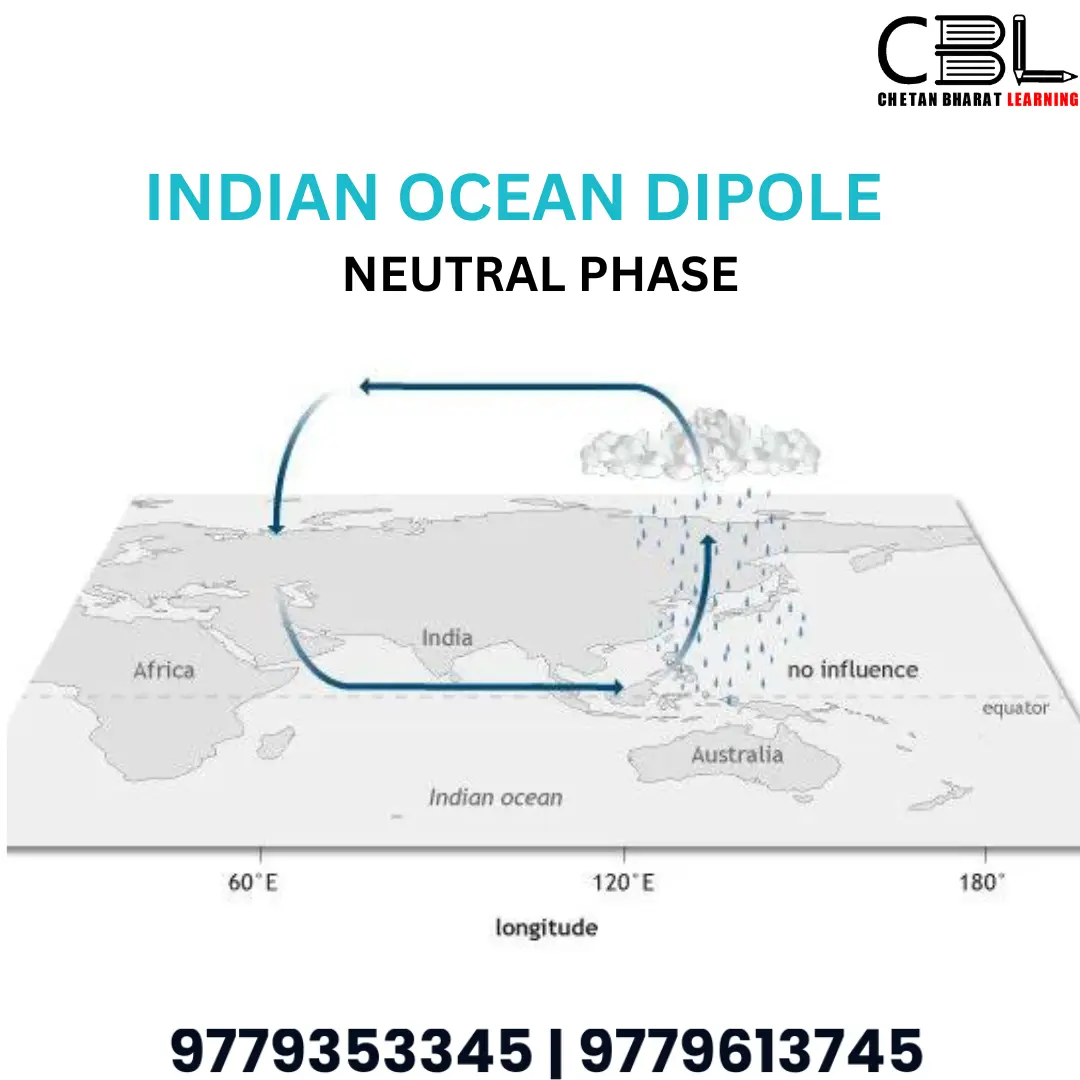Introduction
Often referred to as the “Indian Nino,” the Indian Ocean Dipole shares similarities with the El Niño phenomenon but occurs within the Indian Ocean basin’s relatively smaller area, primarily between the Indonesian and Australian coastlines in the east and the African coastline near Somalia in the west.
During a positive Indian Ocean Dipole phase, warmer sea surface temperatures are observed in the western Indian Ocean, near the African coast, while cooler temperatures prevail in the eastern Indian Ocean, near Indonesia and Australia.
Negative IOD:
- Air Circulation in the Indian Ocean Basin: Near the surface, air circulation in the Indian Ocean basin generally moves from west to east, originating from the African coast and flowing towards the Indonesian islands. However, at upper levels of the atmosphere, the circulation is in the opposite direction.
- Normal Conditions: In a typical year, warmer waters from the western Pacific Ocean near Indonesia flow into the Indian Ocean, contributing to slightly warmer temperatures in that part of the basin. This warming of the waters causes the air above them to rise, leading to a more stable and prevailing air circulation pattern.
- Negative IOD Phase: During a negative IOD phase, the usual air circulation becomes stronger, pushing more warm surface waters from the African coast towards the Indonesian islands. This causes the region around Indonesia to become warmer than usual. As a result, hotter air rises, reinforcing the cycle of enhanced circulation.

Positive IOD:
- Weakening or Reversal of Air Circulation: During a positive IOD event, the air circulation in the Indian Ocean basin becomes slightly weaker than normal, and in rare cases, it may even reverse direction. This leads to consequences such as warming along the African coast and cooling along the Indonesian coastline.
- Association with El Niño and La Niña: Positive IOD events often coincide with El Niño episodes, while negative IOD events are sometimes associated with La Niña events. This association highlights the interconnectedness of climate phenomena across different ocean basins.
- Impact of El Niño on Indonesian Coastline: During El Niño events, the Pacific side of Indonesia tends to experience cooler-than-normal sea surface temperatures. This cooling effect extends to the Indian Ocean side of Indonesia as well. This cooling can contribute to the development of a positive IOD event.
Impact of IOD
- IOD has relatively less impact than El- Nino because it is less powerful in comparison. The ocean-atmosphere interaction exhibited by IOD, closely resembles the fluctuations observed during El Niño events in the Pacific Ocean.
- A positive IOD is helpful in bringing rainfall along the African coastline and also over the Indian subcontinent. It suppresses rainfall over Indonesia, southeast Asia and Australia. A negative IOD event witnesses opposite impacts.
Past Events:
- In 2019 the IOD event developed during the late monsoon but was so strong that it compensated for the deficit rainfall during the first month of the monsoon season (June had 30% deficiency that year).
- The deficit in June that year was also attributed to a developing El Nino but that fizzled out later.


Leave a Reply
You must be logged in to post a comment.